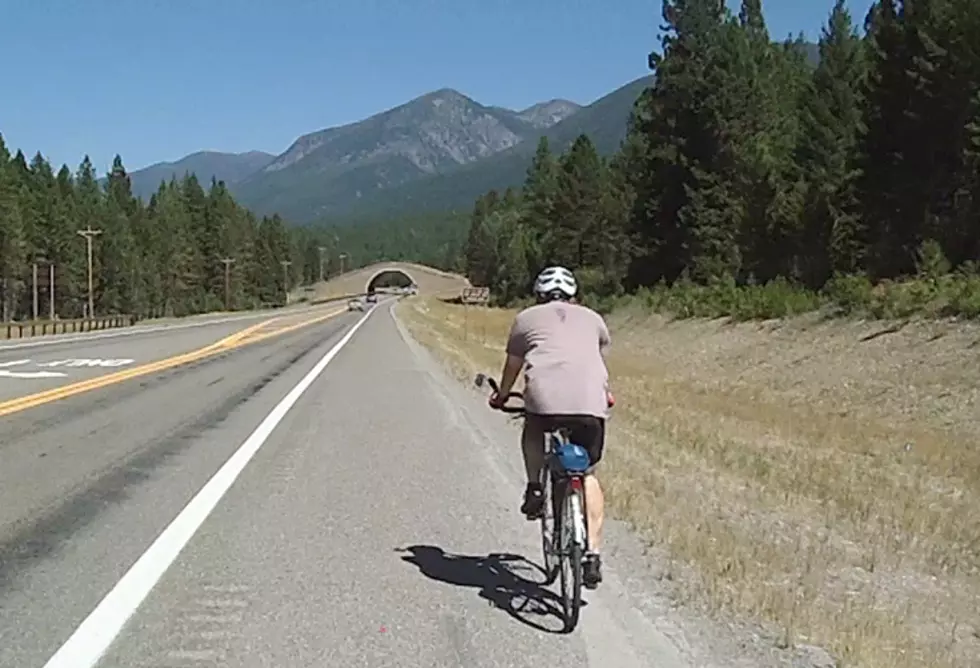
Missoula County commission urges senators to support funds for wildlife crossings
The Missoula County commissioners are urging senators Jon Tester and Steve Daines to support America’s Transportation Infrastructure Act of 2019, which would help fund wildlife crossings in areas like western Montana.
If passed, the Wildlife Crossing Safety section of the act would establish a pilot program to provide competitive grants for projects that would reduce wildlife-vehicle collisions and protect migration corridors for wildlife.
“An estimated 1 million to 2 million large animals are killed by motorists every year,” the commissioners said in a letter to the senators. “Wildlife on roadways also pose a serious threat to people. More than 200 human fatalities and over 26,000 injuries each year are caused by collisions between motorists and wildlife, and this is highly under-reported. These collisions cost Americans more than $8 billion annually, and wildlife crossing structures are an important part of reducing those impacts.”
Kylie Paul, a natural resource specialist with Missoula County, said the act would provide “a great opportunity for the state and county to address human safety issues and protect wildlife. There are a number of areas with concerns, near Lolo and Huson for example, where we have a lot of wildlife collisions.”
With 14,000 reported incidence last year, Montana ranks second to West Virginia in the annual number of vehicle collisions with deer, according to State Farm. The insurance company puts the probability of hitting a deer, elk or moose in Montana at one in 57.
Last December in Helena, the Montana Department of Transportation, Montana Department of Fish, Wildlife and Parks, Montanans for Safe Wildlife Passage and the Western Transportation Institute held a Wildlife and Transportation Summit, bringing together scientists, conservationists, engineers and elected officials to discuss challenges and opportunities.
They all agreed that wildlife crossings are effective, but paying for them is the biggest challenge.
That’s where the transportation act comes in.
“Any of us who live in western Montana are well aware of the potential and reality of collisions with wildlife,” said Commissioner Chairman David Strohmaier. “It’s also a concern with grizzlies, and crossings can mitigate and reduce potential conflicts. So if we can tap into federal dollars to enhance safety and benefit wildlife, we should.”
Several studies indicate that wildlife crossings work. The Montana Department of Fish, Wildlife and Parks estimates that underpasses, overpasses, tunnels and other wildlife crossings, in association with fencing that helps funnel wildlife towards the crossings, can reduce wildlife-vehicle collisions by 97-percent.
In 1996, Parks Canada installed 24 wildlife crossings in Banff National Park. Research indicates that ten different species – including deer, elk, moose, grizzlies and wolves – use those crossings about 84,000 times a year (the number seems to be increasing as animals learn and adapt) and that the crossings, combined with fencing, have reduced wildlife-vehicle collisions by 80 percent.
Researchers also concluded that creating wildlife crossings is more cost effective than the ongoing costs associated with continued vehicle collisions.
“We recognize the economic, social and cultural values of wildlife, as well as human safety issues,” said Commissioner Josh Slotnick. “So we strongly support the creation of wildlife corridors where they’re needed.”
The act, titled S.2302, was introduced by Sen. John Barrasso, R-Wyoming, in July, and is currently under consideration by the Senate Environment and Public Works Committee.
